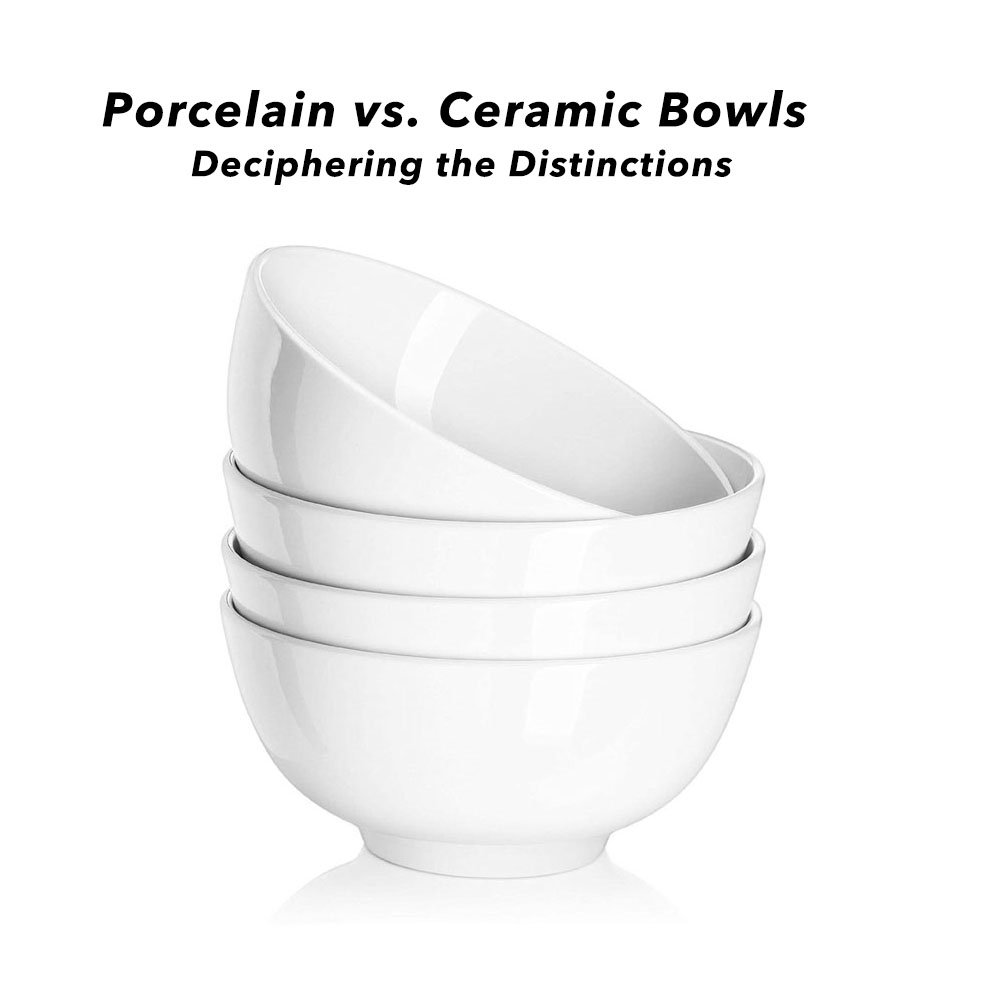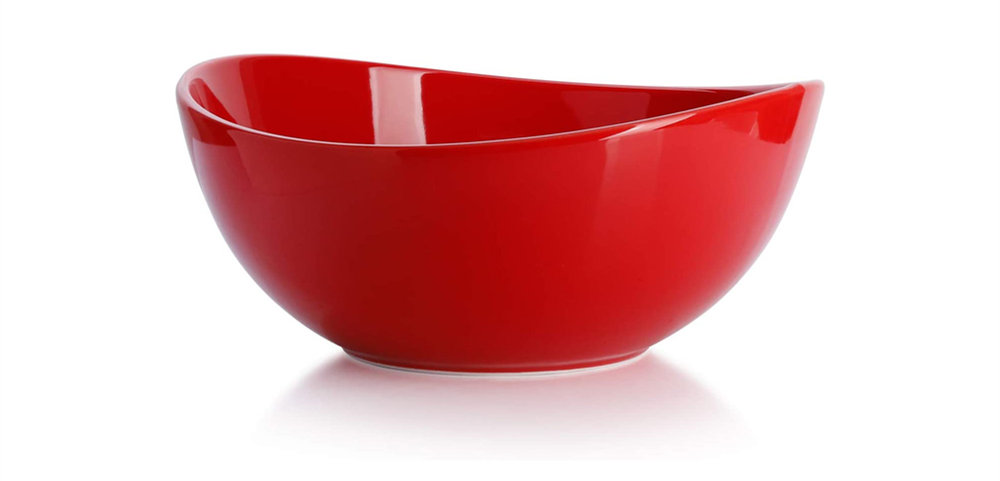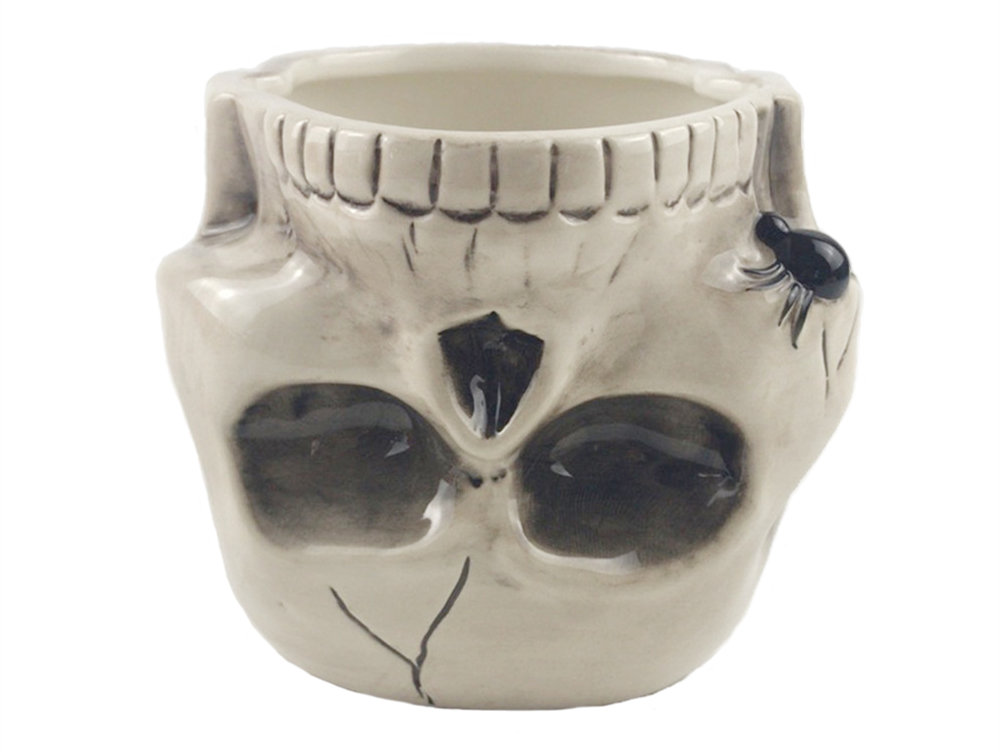Porcelain vs. Ceramic Bowls : Deciphering the Distinctions
Time of issue: 2024-03-06 10:41:25
Introduction:
In the realm of culinary essentials, the choice between porcelain and ceramic bowls holds significant importance for both professional chefs and home cooks alike. While these two materials may seem interchangeable at first glance, they possess distinct characteristics that can influence their suitability for various culinary tasks. In this comprehensive exploration, we delve into the intricate nuances of porcelain and ceramic bowls, unraveling their differences in composition, performance, and aesthetic appeal, ultimately empowering consumers to make informed decisions based on their culinary needs and preferences.
Understanding Porcelain Bowls:

According to TMORA, Fine-grained and translucent ceramic wares are called porcelain. Sometimes referred to as china, porcelain was invented in China in distant antiquity. The Chinese made porcelain of kaolin (white clay) and petuntse, a stone composed of feldspar, mica, and quartz. Porcelain that closely follows the Chinese recipe is known as “true” or hard-paste porcelain. The two other kinds of porcelain are soft paste and bone china.
Porcelain, revered for its delicate beauty and exceptional durability, is a type of ceramic material crafted from fine clay that undergoes a high-temperature firing process. The result is a smooth, non-porous surface that is both elegant and practical, making porcelain bowls prized possessions in kitchens and dining rooms worldwide. Porcelain bowls are renowned for their ability to retain heat, making them ideal vessels for serving piping hot soups, stews, and other culinary creations. Additionally, their non-reactive nature ensures that flavors remain pure and unaltered, enhancing the dining experience.
What is the Advantages and Disadvantages of Porcelain Bowl?
Advantages of Porcelain Bowls:
Exquisite Aesthetic:
Porcelain bowls boast a refined elegance and timeless beauty that elevate any table setting, whether for everyday meals or special occasions.
Exceptional Durability:
Despite their delicate appearance, porcelain bowls are remarkably durable, resistant to chipping, scratching, and staining, ensuring longevity and enduring quality.
Heat Retention:
Porcelain bowls excel in retaining heat, keeping food and beverages warmer for longer periods, making them indispensable for serving hot dishes.
Non-Porous Surface:
The non-porous surface of porcelain bowls prevents the absorption of odors, flavors, and bacteria, ensuring optimal hygiene and food safety.
Microwave and dishwasher safe:
Porcelain bowls are sturdy and stable enough to be used in dishwashers and microwaves.
Disadvantages of Porcelain Bowls:
Fragility:
Despite their exceptional durability, porcelain bowls are still susceptible to breakage if mishandled or dropped onto hard surfaces. Their delicate nature requires careful handling and storage to prevent chips, cracks, or shattering, which can diminish their aesthetic appeal and functionality.
Weight:
Porcelain bowls tend to be heavier than other types of bowls, especially when compared to lightweight materials such as plastic or melamine. This can make them more cumbersome to handle, particularly for individuals with mobility issues or arthritis, and may require extra care when transporting or stacking multiple bowls.
Cost:
Porcelain bowls are often more expensive than bowls made from other materials, reflecting the quality craftsmanship and premium materials used in their production. Because porcelain is fired at a higher temperature than ceramics. Its defective rate is higher than that of low-temperature porcelain, and its price is also much higher. While they offer exceptional durability and timeless beauty, the higher price point may deter some consumers who are looking for more budget-friendly options.
Limited Customization:
Porcelain warps more easily than other ceramic types. It is generally a regular shape such as a circle. It can ensure that the entire shape of the device is evenly stressed and avoid deformation. Unlike ceramic bowls, which offer endless opportunities for customization and personalization, porcelain bowls are typically available in a more limited range of styles, colors, and designs. This may restrict consumers' ability to find bowls that match their specific aesthetic preferences or complement their existing tableware.
More MOQ:
A higher minimum order quantity is usually required when wholesale porcelain bowls. Because roll mold is used and the defective rate is high.
Susceptibility to Thermal Shock:
Porcelain bowls are susceptible to thermal shock, meaning they can crack or break when exposed to rapid changes in temperature. To avoid damage, it's essential to avoid placing hot bowls directly onto cold surfaces or vice versa, and to allow them to cool gradually before washing or storing.
Exploring Ceramic Bowls:

According to WIKI, A ceramic is any of the various hard, brittle, heat-resistant, and corrosion-resistant materials made by shaping and then firing an inorganic, nonmetallic material, such as clay, at a high temperature. Common examples are earthenware, porcelain, and brick.
Ceramic Bowl Including earthenware bowl, stoneware bowl and porcelain bowl. Let’s exclude porcelain bowls first and compare them with the other two types. Ceramic bowls, while sharing similarities with porcelain in their clay composition, undergo a distinct firing process that results in a more porous and textured surface. This characteristic imparts a rustic charm and artisanal appeal to ceramic bowls, making them beloved additions to kitchens and dining spaces seeking a touch of warmth and character. Ceramic bowls come in an array of shapes, sizes, and designs, ranging from sleek and modern to rustic and handcrafted, offering consumers a wealth of options to suit their personal style and culinary preferences.
What is the Advantages and Disadvantages of Ceramic Bowl?
Advantages of Ceramic Bowls:
Artisanal Aesthetic: Ceramic bowls exude a handmade charm and artisanal allure, adding personality and character to any culinary setting.
Affordable Options: Compared to porcelain, ceramic bowls are often more budget-friendly, making them accessible to a wide range of consumers seeking quality kitchenware without breaking the bank.
Thermal Shock Resistance: Ceramic bowls demonstrate good thermal shock resistance, meaning they can withstand rapid changes in temperature without cracking or breaking, enhancing their durability and reliability.
Customization Opportunities: Ceramics are less susceptible to deformation than porcelain. ceramic bowls can crafted by skilled artisans and potters, offering consumers the opportunity to customize many their kitchenware with unique designs, colors, shape, and finishes.
Versatility: Ceramic bowls are versatile tools that lend themselves to a variety of culinary applications, from mixing and serving to baking and storing, making them indispensable assets in any kitchen arsenal.
Disadvantages of Ceramic Bowls:
Fragility:
While ceramic bowls are generally durable, they are still susceptible to breakage if mishandled or dropped onto hard surfaces. Their porous nature and textured surface make them more prone to chipping and cracking than materials like porcelain or stainless steel, requiring careful handling and storage to prevent damage.
Weight:
Ceramic bowls tend to be heavier than other types of bowls, especially when compared to lightweight materials like plastic or melamine. This can make them more cumbersome to handle, particularly for individuals with mobility issues or arthritis, and may require extra care when transporting or stacking multiple bowls.
Limited Thermal Retention:
Unlike porcelain bowls, which excel in retaining heat, ceramic bowls have limited thermal retention properties. This means that they may not keep food and beverages as hot for as long, making them less suitable for serving piping hot dishes or drinks. However, this drawback can be mitigated by preheating or pre-chilling ceramic bowls before use.
Susceptibility to Staining:
Ceramic bowls, with their porous surface, are more susceptible to staining than non-porous materials like porcelain. Certain foods and beverages, such as tomato-based sauces or red wine, can leave behind stubborn stains that are difficult to remove, detracting from the appearance of the bowls over time.
Uneven Heating:
Due to variations in thickness and density, ceramic bowls may heat unevenly in the oven or microwave, leading to inconsistent cooking results. This can be problematic when baking or roasting, as it may result in undercooked or overcooked portions of food, requiring careful monitoring and adjustment during the cooking process.
Microwave Safety:
Earthenware bowls contain materials such as metallic compounds or glazes that can react unpredictably when exposed to microwave radiation. This can lead to uneven heating, excessive heat buildup, and even sparking or cracking of the bowl. Additionally, ceramics that are not designed for microwave use may contain air pockets or moisture that can expand rapidly when heated, causing the bowl to shatter or explode. Normal stoneware can use in Microwave.
Dishwasher Safety:
Earthenware bowls that are not dishwasher safe may be susceptible to damage from the harsh detergents, high temperatures, and intense water pressure used in dishwashers. Over time, repeated exposure to these conditions can cause glazes to fade or craze, surfaces to become rough or pitted, and colors to dull or discolor. In extreme cases, the bowl may develop cracks or fractures, compromising its structural integrity and usability. Normal stoneware can use in Dishwasher.
Comparing Performance:
While both porcelain and ceramic bowls offer a multitude of benefits, their performance can vary depending on the specific culinary task at hand. Porcelain bowls excel in retaining heat, maintaining the temperature of hot dishes for extended periods without compromising flavor or texture. This makes them ideal for serving soups, stews, and other dishes that benefit from being enjoyed piping hot. Additionally, porcelain's non-porous surface ensures optimal hygiene and food safety, making it well-suited for preparing and serving a wide range of culinary creations.
On the other hand, ceramic bowls, with their more porous surface, offer advantages in certain culinary applications. Their thermal shock resistance makes them suitable for use in the oven, allowing them to withstand high temperatures without cracking or breaking. This makes ceramic bowls versatile tools for baking and roasting, as well as for serving chilled dishes such as salads and desserts. Additionally, ceramic's artisanal aesthetic adds a touch of warmth and character to table settings, enhancing the dining experience and creating a welcoming atmosphere.
Considering Aesthetic Appeal:
In addition to their functional attributes, both porcelain and ceramic bowls contribute to the aesthetic appeal of dining spaces, each offering its own unique visual allure. Porcelain bowls, with their smooth, lustrous surface and delicate translucency, exude a sense of refinement and sophistication that lends an air of elegance to any table setting. Their classic beauty and timeless appeal make them prized possessions for discerning hosts and hostesses seeking to create memorable dining experiences for their guests.
Conversely, ceramic bowls embrace a more eclectic and artisanal aesthetic, with their textured surfaces and handcrafted finishes adding a rustic charm and casual elegance to dining spaces. Whether adorned with intricate patterns, vibrant colors, or earthy glazes, ceramic bowls serve as focal points that infuse personality and character into table settings. Their tactile appeal and organic allure create a warm and inviting atmosphere that encourages conviviality and shared enjoyment of food and fellowship.
Practical Considerations:
When selecting between porcelain and ceramic bowls, it's essential to consider practical factors such as durability, maintenance, and compatibility with specific culinary tasks. Porcelain bowls, with their exceptional durability and heat retention properties, are well-suited for serving hot dishes and maintaining optimal food temperatures. Their smooth, non-porous surface makes them easy to clean and resistant to staining, ensuring years of reliable performance with minimal upkeep.
Ceramic bowls, while slightly less resilient than porcelain, offer their own set of advantages, including affordability, customization opportunities, and artisanal appeal. Their thermal shock resistance makes them suitable for a variety of cooking methods, from baking and roasting to microwaving and freezing, enhancing their versatility in the kitchen. While ceramic bowls may require more delicate handling and care to prevent chipping or breakage, their aesthetic charm and tactile allure make them cherished additions to any culinary collection.
Conclusion:
In conclusion, while porcelain and ceramic bowls share some similarities, they also have distinct differences in terms of appearance, performance, and price. Porcelain bowls are prized for their elegance, strength, and heat retention properties, making them ideal for formal dining occasions and serving hot foods. Ceramic bowls, on the other hand, offer a wider range of styles and are more affordable, making them suitable for everyday use and casual dining. By understanding the unique characteristics of porcelain and ceramic bowls, consumers can choose the option that best suits their needs and enhances their dining experience.
RECENT POSTS
- The Benefits of Wholesale High-Quality Ceramic Products for Retailers
2025-12-17
- Can You Make an Ashtray with Air Dry Clay? Pros, Cons, and Safer Alternatives
2025-12-17
- The Impact of Ceramic Materials in Energy-Efficient Buildings: Benefits and Applications
2025-12-04
- Top 7 Ceramic Cookware Health Benefits: Why It’s a Safer Choice for Your Kitchen
2025-12-04
- How to Clean Ceramic Planters and Improve Their Lifespan?
2025-11-17
- 15 Best Ceramic Holiday Gift Ideas for 2025: Thoughtful, Elegant & Heartfelt
2025-11-17
- Stoneware vs Porcelain vs Earthenware: Quick Decision Guide
2025-10-09
- Are Ceramic Glazes Food Safe? The Truth Behind the Shine
2025-10-09










